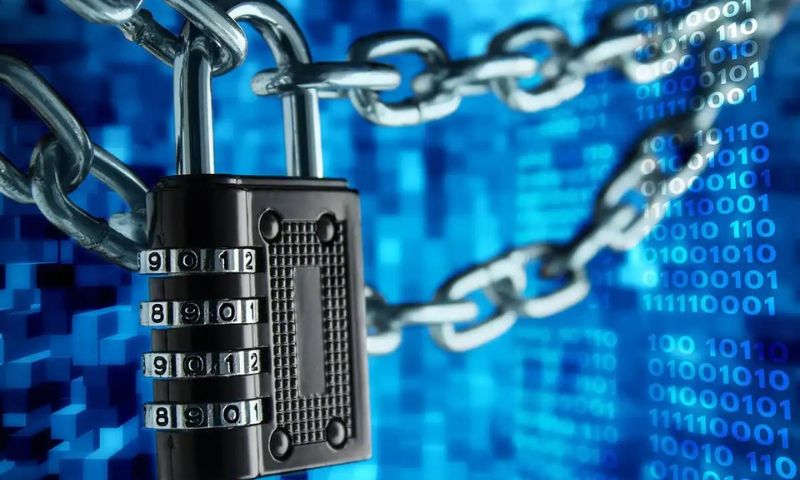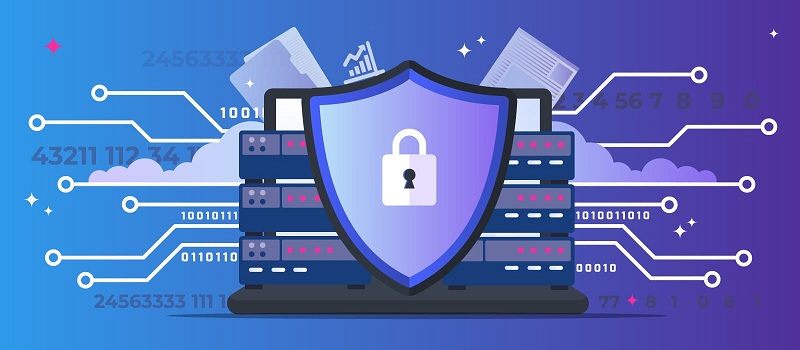Think your digital wallet is safe as houses? The security of blockchain technology might just be the vault door to your virtual valuables. But how safe is safe? Imagine a fortress – unbreakable, with walls thick enough to make any attacker think twice. That’s your blockchain encryption at work, your financial stronghold in the digital realm. Still, even fortifications have their weak spots. I’m digging deep into what keeps your crypto coins tucked in tight and the bad guys out. Let’s crack open the world of blockchain security and see if your digital assets are truly untouchable.
Understanding Blockchain Encryption and Security
The Role of Cryptography in Protecting Your Wallet
Cryptography keeps your digital wallet safe. It turns clear info into codes. This keeps your data away from hackers. When you use a blockchain, your transactions need a secure code. This code is your private key. No one else should have it. Think of it like a secret password. It confirms that you own your digital money.
Each transaction also has a public key. Others see this key, but it’s safe. It says you made the transaction. But it doesn’t show your private key. So, it helps others trust you’re the one sending or receiving digital money. The math behind these keys is hard to break. This is why your digital wallet can be untouchable.
Good blockchain encryption methods mix letters, numbers, and symbols. The mix should be random. This makes it hard for anyone else to guess your keys. Cryptographic security techniques use this mixed data. They protect your money on the blockchain. Each user’s details are different. This makes sure no one else can act as you.
Implementing Hash Functions for Enhanced Security
Hash functions in a blockchain are like secret codes. When you make a transaction, the hash function jumbles it up. It creates a unique jumble for each transaction. It’s like making a one-of-a-kind fingerprint for your digital money move. These jumbles can’t be undone easily. This means your transaction details are safe.
Even if someone changes just one letter or number, the hash changes a lot. It becomes a completely different jumble. So, if a hacker tries to change your transaction, everyone will notice. This keeps the whole blockchain safe. One wrong move stands out. It’s like a broken piece in a puzzle.
Hash functions are key for distributed ledger technology security. They work fast and keep every transaction safe. This system is good at spotting changes that shouldn’t be there. It helps stop blockchain hacking vulnerabilities. The goal is to make cyber-attacks on blockchain very hard or even impossible.
Using hash functions helps in many ways. It secures your data, keeps your identity safe, and makes the blockchain trustworthy. These functions follow a set of rules. These rules are called blockchain security standards. They’re there to protect the network and your money.
By understanding how cryptography and hash functions work, you keep your wallet secure. It’s like having a super strong lock on your digital treasure chest. Remember, the key to this lock is your private key, and you must guard it well. Always be aware of new threats like quantum computing. These could change the game. For now, your wallet can indeed be untouchable if you follow these steps.

Evaluating the Resilience of Consensus Mechanisms
Proof of Work vs. Proof of Stake: A Security Showdown
When you hold digital money, you want it safe, right? Well, let’s talk security. Picture two big guards at your wallet’s door. They’re called Proof of Work (PoW) and Proof of Stake (PoS). Both keep your digital cash safe in unique ways. In PoW, miners solve puzzles. It’s like a race where the winner updates the blockchain and gets fresh coins. This guard is strong, but it loves energy. Now, what about PoS? Here, coin owners help guard the vault. They lock up coins and get to validate if they have enough. Less energy, still strong. But if a bad guy gets lots of coins, PoS might get tricked. This is rare but could happen.
In short, it can be tough to choose. PoW is battle-tested but uses heaps of power. PoS is newer, greener, and gaining fans. Security is key, and both want to win it.
The Importance of Smart Contract Auditing
Think about a contract that talks to your money. It says, “Hey, do this or that when stuff happens.” That’s a smart contract. Sounds cool, but they can have bugs. Bugs in code, not real bugs!
To stop these bugs from stinging, smart contract auditing comes in. It checks the code’s health, finds gaps, and plugs them up. Smart folks pour over every line of code. They make sure it does just what it should – no more, no less. Just like how your teacher checks your homework. Experts use tools and know-how to stop hackers from breaking in.
Checking smart contracts keeps your digital coins snug as a bug – but without the bugs. It’s all about making your wallet a fortress. One you can trust to keep your digital treasure safe and sound.
Smart contracts are great, but without a check-up, they can be risky. Auditing can give you peace of mind. Your hard-earned coins won’t walk away while you sleep. So, make sure those contracts get a good, hard look. It’s your money’s best buddy against those sneaky bugs.

Mitigating Blockchain Vulnerabilities and Attacks
Strengthening Node Security against Unauthorized Access
Strong node security keeps a blockchain healthy. To picture this, think of each node as a mini-fort. Just like forts need thick walls and lookouts, nodes need tough defenses. If one node falls, the entire blockchain can hurt. But how do we guard these forts?
We start with robust blockchain encryption methods. They are like invisible, unbreakable walls. Next, we set up top-notch keys, or secret codes, that only let the right people in. Imagine a special handshake that opens a door; that’s what these keys do. Each key is unique and super hard to guess.
Putting up these defenses is vital because hackers always try to break in. If they get through, they could steal data or even take down the network. That’s why keeping nodes safe is no joke. It needs constant check-ups and smart planning, like always being ready for a surprise test at school. We keep the bad guys out by staying one step ahead.
Protecting Against Ledger Tampering and Double Spending
Nobody likes a cheater, right? In blockchain, we must stop two big cheats: ledger tampering and double spending. Let’s dive in.
First, ledger tampering, where someone sneakily changes records. To block this, blockchain uses something magic called immutability. This means once something’s written down, it can’t be changed—like carving words in stone. The blockchain keeps copies with everyone. If someone tries to cheat, their false version won’t match all the others.
Then there’s double spending. Imagine spending $10 on stickers, but somehow, you still have that $10 to buy more. Sounds fun, but it’s a big no-no. To prevent this, blockchain watches over each transaction. It has smart ways to check if you really have the cash you say you do.
For both these issues, the system has rules—called consensus mechanisms. They’re like a group of friends deciding where to play. Everyone must agree before anything happens. These rules help keep everything fair and secure.
In the end, blockchain’s strength comes from teamwork and smart design. We build it tough to guard against crafty hackers and cheats. Every day, we’re finding new ways to make this tech even safer. So, while no fort, I mean node, is ever 100% untouchable, we’re working hard to get as close as we can.

Advanced Security: Beyond The Basics of Blockchain
The Implications of Quantum Computing on Blockchain’s Future
You’ve heard of hackers and cyber threats, right? Now, quantum computers are a new kid on the block. They can solve puzzles and break codes super fast. This might make you wonder, “Can quantum computers crack blockchain?” Simply put: not yet, but they could.
Right now, blockchain is safe because it uses tough math problems. These are hard for regular computers to solve. But quantum computers use special rules from science to work much faster. They could one day crack codes that keep our digital cash safe. This worries some people who own bitcoin or other digital money.
Quantum computers are still growing. They’re not ready to take on blockchain just yet. But smart folks are working on new ways to keep blockchains safe. This includes using new math that even quantum computers can’t crack. Just like comic book heroes, for every new villain, there’s a hero with new powers to save the day.
This doesn’t mean we can just chill and wait. We need to stay on our toes and keep improving blockchain’s body armor. This means making it harder and harder for any computer – quantum or not – to break in.
Regulatory Compliance and Cross-Chain Security Measures
Now, let’s talk about rules and playing nice with others. For blockchain, this means making sure everyone follows the law. It also means keeping things safe when moving digital money across different blockchains.
So, can rules and safety work together in blockchain? Yes, they can and they must. Think of rules like traffic lights. They help so we don’t crash into each other. In blockchain, we have rules to make sure no one cheats or does something fishy. This is called regulatory compliance, and it helps keep our digital coins safe.
But it’s not only about following rules. We also use fancy lock and key systems called cryptographic security techniques. They help us keep thieves away. When blockchains talk to each other, they use special codes like secret handshakes. This is cross-chain security.
Even if a bad guy gets their hands on some data, without the secret handshake, it’s all mumbo jumbo to them. They can’t do much with it. This keeps our digital stuff safe, even when it hops from one blockchain to another.
In a nutshell, blockchain has some neat tricks to keep your digital wallet snug as a bug. It’s like having a safe that can punch back. Sure, it’s not perfect and there are some big tech bullies out there. But we are always working on better locks, tougher rules, and faster ways to spot bad guys. Making sure your digital treasure stays just that – untouchable – is what keeps us up at night. And we wouldn’t have it any other way!
In this post, we cut through the complex world of blockchain. We kicked off with the basics of cryptography and how it shields your wallet. Hash functions bring extra armor to this digital fortress, beefing up security even more.
Then, we squared off Proof of Work against Proof of Stake, showing how each holds up in the security arena. Don’t forget the muscle smart contract audits add to the mix — essential for airtight agreements.
We tackled the sneaky side, too: fighting off attacks. Node security is a must to block intruders, and to stop ledger tampering, we need sharp eyes on every transaction.
To top it off, we pushed past the simple stuff. Quantum computing might shake things up, but being ready matters. And when it comes to playing safe, following the rules and linking chains securely set you ahead of the game.
Blockchain’s not just tech—it’s the frontier of trust. Staying informed means staying secure. Now get out there and use this knowledge to your advantage!
Q&A :
How is blockchain technology secure?
Blockchain technology offers enhanced security through its distributed ledger system. Each transaction is encrypted and linked to the previous transaction, forming a chain that is virtually impossible to alter without detection. This is due to consensus mechanisms that require majority approval from nodes in the network to validate transactions, deterring fraudulent activity.
What makes blockchain resistant to tampering?
The resistance to tampering within blockchain technology stems from its inherent structure. Each block contains a unique cryptographic hash of the preceding block, creating a secure link. If a hacker attempts to alter a single block’s data, the hash will change, invalidating the structure of the blockchain. Since the true blockchain is simultaneously held by many participants, any altered versions would be quickly rejected by the network.
Can blockchain technology be hacked?
While no system is impervious to attacks, blockchain technology is generally considered very difficult to hack. This is due to its decentralized nature and cryptographic security measures. A successful attack would typically require control of more than 50% of the network’s computing power, a feat known as a 51% attack, which is both expensive and technically challenging.
How does cryptography enhance blockchain security?
Cryptography enhances blockchain security through the use of hashes and digital signatures. Each block contains a unique cryptographic hash created from its data, and any alteration to the data would change this hash. Additionally, digital signatures verify the authenticity of the parties involved in the transactions, providing an extra layer of security against fraud.
Does the security of blockchain technology extend to smart contracts?
Yes, the security benefits of blockchain technology also extend to smart contracts. These self-executing contracts with the terms of the agreement directly written into lines of code are also distributed and encrypted on the blockchain network. This means they inherit the security features of blockchain, such as immutability and distributed consensus. However, it’s important to note that smart contract code can contain bugs that could be exploited if not properly audited.



